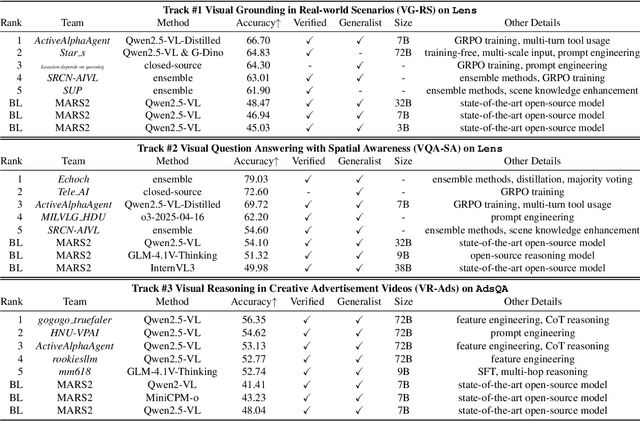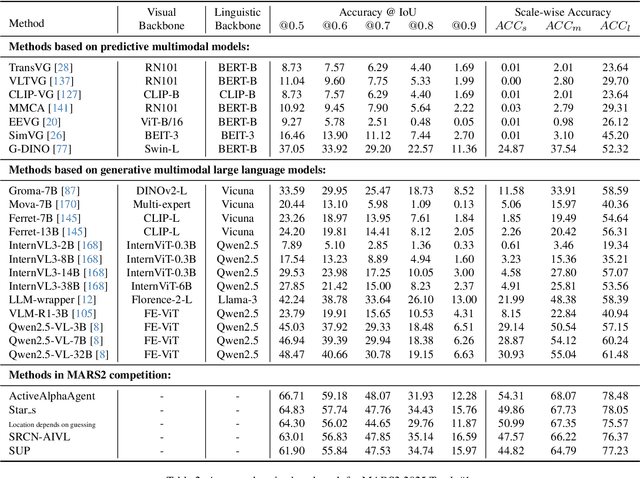Yipeng Lin
Towards Real-World Deepfake Detection: A Diverse In-the-wild Dataset of Forgery Faces
Oct 09, 2025Abstract:Deepfakes, leveraging advanced AIGC (Artificial Intelligence-Generated Content) techniques, create hyper-realistic synthetic images and videos of human faces, posing a significant threat to the authenticity of social media. While this real-world threat is increasingly prevalent, existing academic evaluations and benchmarks for detecting deepfake forgery often fall short to achieve effective application for their lack of specificity, limited deepfake diversity, restricted manipulation techniques.To address these limitations, we introduce RedFace (Real-world-oriented Deepfake Face), a specialized facial deepfake dataset, comprising over 60,000 forged images and 1,000 manipulated videos derived from authentic facial features, to bridge the gap between academic evaluations and real-world necessity. Unlike prior benchmarks, which typically rely on academic methods to generate deepfakes, RedFace utilizes 9 commercial online platforms to integrate the latest deepfake technologies found "in the wild", effectively simulating real-world black-box scenarios.Moreover, RedFace's deepfakes are synthesized using bespoke algorithms, allowing it to capture diverse and evolving methods used by real-world deepfake creators. Extensive experimental results on RedFace (including cross-domain, intra-domain, and real-world social network dissemination simulations) verify the limited practicality of existing deepfake detection schemes against real-world applications. We further perform a detailed analysis of the RedFace dataset, elucidating the reason of its impact on detection performance compared to conventional datasets. Our dataset is available at: https://github.com/kikyou-220/RedFace.
MARS2 2025 Challenge on Multimodal Reasoning: Datasets, Methods, Results, Discussion, and Outlook
Sep 17, 2025



Abstract:This paper reviews the MARS2 2025 Challenge on Multimodal Reasoning. We aim to bring together different approaches in multimodal machine learning and LLMs via a large benchmark. We hope it better allows researchers to follow the state-of-the-art in this very dynamic area. Meanwhile, a growing number of testbeds have boosted the evolution of general-purpose large language models. Thus, this year's MARS2 focuses on real-world and specialized scenarios to broaden the multimodal reasoning applications of MLLMs. Our organizing team released two tailored datasets Lens and AdsQA as test sets, which support general reasoning in 12 daily scenarios and domain-specific reasoning in advertisement videos, respectively. We evaluated 40+ baselines that include both generalist MLLMs and task-specific models, and opened up three competition tracks, i.e., Visual Grounding in Real-world Scenarios (VG-RS), Visual Question Answering with Spatial Awareness (VQA-SA), and Visual Reasoning in Creative Advertisement Videos (VR-Ads). Finally, 76 teams from the renowned academic and industrial institutions have registered and 40+ valid submissions (out of 1200+) have been included in our ranking lists. Our datasets, code sets (40+ baselines and 15+ participants' methods), and rankings are publicly available on the MARS2 workshop website and our GitHub organization page https://github.com/mars2workshop/, where our updates and announcements of upcoming events will be continuously provided.
3rd Workshop on Maritime Computer Vision (MaCVi) 2025: Challenge Results
Jan 17, 2025Abstract:The 3rd Workshop on Maritime Computer Vision (MaCVi) 2025 addresses maritime computer vision for Unmanned Surface Vehicles (USV) and underwater. This report offers a comprehensive overview of the findings from the challenges. We provide both statistical and qualitative analyses, evaluating trends from over 700 submissions. All datasets, evaluation code, and the leaderboard are available to the public at https://macvi.org/workshop/macvi25.
Solution for Authenticity Identification of Typical Target Remote Sensing Images
May 03, 2024Abstract:In this paper, we propose a basic RGB single-mode model based on weakly supervised training under pseudo labels, which performs high-precision authenticity identification under multi-scene typical target remote sensing images. Due to the imprecision of Mask generation, we divide the task into two sub-tasks: generating pseudo-mask and fine-tuning model based on generated Masks. In generating pseudo masks, we use MM-Fusion as the base model to generate masks for large objects such as planes and ships. By manually calibrating the Mask of a small object such as a car, a highly accurate pseudo-mask is obtained. For the task of fine-tuning models based on generating masks, we use the WSCL model as the base model. It is worth noting that due to the difference between the generated pseudo-Masks and the real Masks, we discard the image feature extractors such as SRM and Noiseprint++ in WSCL, and select the unscaled original image for training alone, which greatly ensures the match between the image and the original label. The final trained model achieved a score of 90.7702 on the test set.
 Add to Chrome
Add to Chrome Add to Firefox
Add to Firefox Add to Edge
Add to Edge